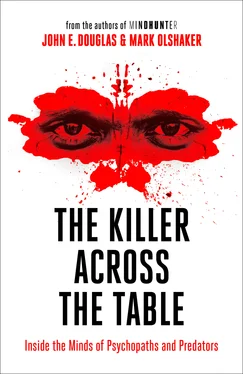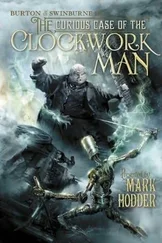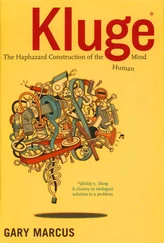“He was kind of seen as an administration toady,” said Carrillo. “Also, I remember when the in thing to do was to join the Playboy Club in New Jersey, and Joe was a gold card member. He made it a point to show everyone in the teachers’ room his gold card. These kinds of things were important to him, seeking out approval or recognition from others.”
We asked Carrillo if McGowan was popular with the students. “I think he was,” he responded. “He was the type of teacher who tried to be friendly with them. He strove to be liked by the kids.”
It didn’t always work out that way, though. Mark and I later learned from a number of his female students that they had felt uncomfortable around him. One woman, now in her early sixties, recalled in a chemistry lab asking Mr. McGowan what to do with a glass flask she no longer needed. McGowan grabbed it from her and threw it to the floor, where it shattered across the room. He offered no explanation for his action.
Other students had similar thoughts about McGowan. One shared her story on social media: “Back in the day, I believe senior year 1971, I had McGowan for chemistry. I was so creeped out by him that I went to the office and demanded to get out of his class.”
Tappan Zee High School was closed for spring break the week after Joan’s murder, but when classes resumed the following Monday, an atmosphere of stunned silence prevailed.
“Going back to school was very bizarre,” Carrillo said. “Everybody knew about it, but nobody really talked about it much. The students may have talked about it among themselves, but the staff was more in shock than anything else. The board of education dismissed [McGowan] at a very private meeting; there was no publicity about it.”
Carrillo and Eugene Baglieri, the other teacher in the car pool, talked about it, “and you think of things, looking back,” Carrillo said. “But it was such a terrible experience, even to be touching on it in a peripheral way, that people just avoided it.”
For Jack Meschino, it was even worse. “It was terrible coming back,” he remembered. “We team-taught, and all of a sudden, our students were my students. I’ll never forget the first few classes. It took me five or ten minutes even to get up the courage to address the students. We all sat there and looked at each other; didn’t know how to handle it. We were dumbstruck.”
There would be more psychological exams for Joseph McGowan in the next several weeks as he sat in the Bergen county jail in Hackensack. On May 10, 1973, a little more than two weeks after Dr. Galen’s interview, Dr. Emanuel Fisher, a psychologist, tested the suspect. He found McGowan to be “an exceedingly labile, tense and hysterical personality whose tendency is to act out mood and impulse in a very explosive manner. Rational controls are weak, despite the fact that he is an exceedingly brilliant individual.”
Dr. Fisher noted “a tremendous amount of underlying, unconscious hostility,” that he “repressed, avoided, sublimated and intellectualized.” And although he presented himself as “a very proper, conventional, conforming individual, [t]his exaggerated propriety, conventionality and conformity, constitute his defensive facade, for himself and for others, against the underlying depression and hostility of which he is unconscious.”
Less than a month later, on June 6, Dr. Galen submitted a psychiatric report based on his interviews with McGowan. He said McGowan had “given a well-documented history of sexual attraction to young girls. This, coupled with a clearly evident picture of a dominating and overprotective mother, would strongly hint at some profound problems in [relation] to his making a normal adjustment to an adult woman.”
Galen cited McGowan’s admission to him that for the previous year or so, he had found himself sexually aroused by young girls and specifically mentioned his twelve-year-old female cousin. He said he had masturbated to rape fantasies. From this, the psychiatrist concluded, “younger girls would pose no threat to his rather shaky concept of his manhood.”
A further neuropsychiatric report was submitted by Dr. Abraham Effron in October, confirming what McGowan had told Dr. Galen about “fantasies of sexual relations with little girls,” adding that he was sexually aroused as a nineteen-year-old camp counselor when a young girl sat on his lap.
Dr. Effron also interviewed McGowan’s mother, Genevieve, who had not been home at the time of the murder. She said that her husband, who had died of a heart attack while Joseph was in college, “was much closer to the boy [than she was] and would take him out often.” After Joe completed college, he moved back home with her and his grandmother.
Effron’s report stated:
He does not show what he necessarily feels. He conceals many facets of his complex true self and his true identification and related emotional difficulties. He tries to hide his inability to truly establish his masculinity. He experiences tension whenever he gets close to the opposite sex. This passivity generates anxiety, which in turn feeds on itself and results in a higher state of tension, which must expiate itself in a complete loss of self-control or sexual release.
He manages to control an underlying psychosis by intellectually holding in abeyance his primitive drives to an inordinate extent, but as in the past and tragically in the recent past, he may act out again.
There is an ongoing debate regarding whether violent predators are born or made—the so-called nature versus nurture question. I would argue that, while no one who does not have certain inborn tendencies toward impulsivity, anger, and/or sadistic perversions is going to evolve into a predator because of a bad upbringing, there is no doubt in my mind that those possessing such inborn tendencies can be pushed along the path to predation by negative influences as they grow up and mature.
In fact, Ed Kemper was one such individual.
Edmund Emil Kemper III was the first prison interview that Bob and I did after my idea to speak with the killers. The only problem was we didn’t really know what we were doing.
As FBI agents, we were pretty much trained on the job to interview witnesses and interrogate suspects. But neither of those skill sets really prepared us for the prison interviews. An investigative interview is a meeting with one or more persons who may have information relative to a crime or the perpetrator of that crime. We try to find out as much of the who, what, when, where, why, and how as possible. That person is not treated as a suspect.
An interrogation, on the other hand, involves questioning a potential suspect in a crime. That individual is entitled to be informed of his or her legal rights and in no case may the information violate rules of due process. This tends to be more of a show-and-tell on the part of the interrogator in which the suspect is advised of or shown definitive forensic evidence linking him to the crime. The questions fall into the form of not if, but why and how, to get the suspect to cooperate and confess.
Neither of these approaches was appropriate for our prison interviews. The interplay between the agent and the violent offender needed to be informal and not overtly structured. What we were looking for was not so much the facts of the case, which were already established, but the motivation, the pre- and post-offense behavior, the victim selection process, and then the big question of why, without being too assertive, directed, or leading—the opposite of what we’d try to do in a suspect interrogation.
As counterintuitive as it sounds, the prison encounter had to feel “natural”—just a couple of people talking freely and exchanging information.
Since we were in California, we decided to go after the local “clientele” first. A special agent out there who was one of Bob’s former students agreed to act as liaison for us with the state prison system. Ed Kemper was a six-foot-nine, 300-pound giant of a man who was serving multiple life sentences at the California Medical Facility at Vacaville, midway between Sacramento and San Francisco. Kemper had become known as the Coed Killer for his string of murders in and around the University of California, Santa Cruz in 1972–1973.
Читать дальше












